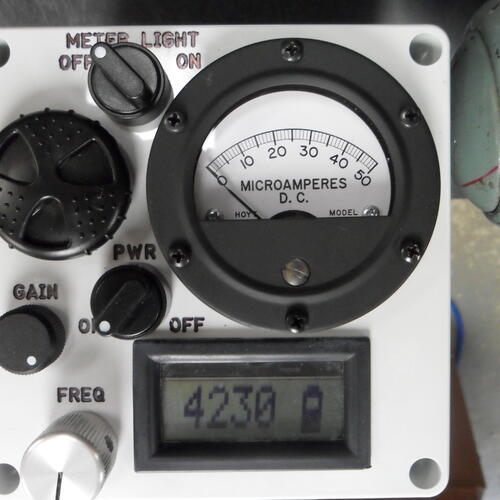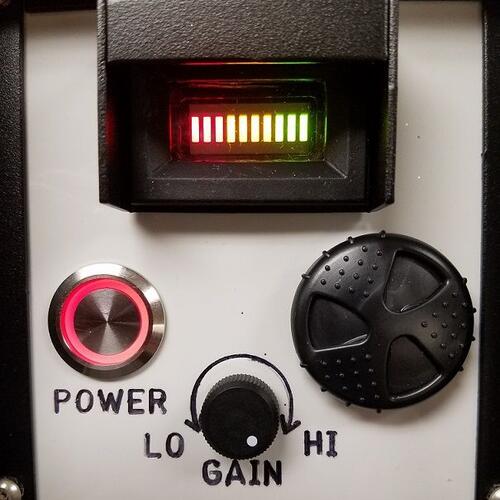Detect Signal Failures on the Rail - Scanning Audio Frequency Rail Current Detectors
Rail current detectors are essential safety and monitoring devices used in railway systems to detect the presence and flow of electrical current in the tracks. They play a crucial role in ensuring safe and efficient train operations. Here’s a detailed description:
Function and Purpose of Rail Current Detectors
The primary function of rail current detectors is to monitor the electrical current passing through the rails. These detectors are crucial for identifying train location, track occupancy, and ensuring the integrity of the rail's electrical circuits.
Key Features
Current Detection: Rail current detectors measure the electrical current in the tracks. They detect the presence of trains by identifying changes in current, which is used to determine if a section of track is occupied.
Safety Assurance: By monitoring the current, these detectors help in preventing collisions and accidents. They ensure that signaling systems are aware of train positions and track occupancy, which is critical for safe railway operations.
Track Integrity Monitoring: The detectors can identify issues such as broken rails, poor electrical connections, or other anomalies that could affect train operation and safety. This allows for timely maintenance and repairs.
Data Transmission: Rail current detectors are often integrated with signaling and communication systems. They transmit real-time data about track occupancy and current flow to central control systems, enabling effective monitoring and management.
Durability: Designed to withstand harsh environmental conditions, rail current detectors are robust and reliable. They are built to operate effectively under varying weather conditions and mechanical stresses.
Integration with Signaling Systems: These detectors work in conjunction with railway signaling systems to control signals based on track occupancy. When a train is detected, signals are automatically adjusted to prevent other trains from entering the occupied section.
Is there too much guesswork when you are troubleshooting signal issues on your track circuits? Finally, VeriTranz by Veritech Inc. offers a real solution to troubleshooting train signal failures on the rail! We are proud to introduce the scanning audio frequency rail current detector, a highly sensitive, portable, lightweight device that can detect rail current loss at selectable power, track & cab signal frequencies.
Our railroad current detector allows the signal maintainer to quickly find shunts, partial shunts, fouling wire and impedance bond problems, insulated joint failures, switch component issues, and other areas of current loss using an analog meter and an audible alarm. The rail industry needs accurate and fast information to address signal problems. Our detector is designed to be fast and accurate.
Contact VeriTranz for our Rail Scanner Pro scanning audio frequency rail current detector, the right tool for the job!
Every railway signal system can benefit from VeriTranz’s scanning audio frequency rail current detector. We also provide other engineering services and products that are customer-driven, so let us know of any problems your rail system faces. Our New Jersey facility exclusively deals in engineered American-made custom parts, allowing us to provide the exact solutions you need. See two examples of our devices below.
Contact our team today for more information about our signal troubleshooting solutions. You can call us or use our online contact form.
Rail Scanner Pro scanning audio frequency rail current detector
After an exploratory meeting with a Superintendent of Signals at New Jersey Transit, we were shown the "homegrown" explorer coil they used to troubleshoot signal issues on the rail. The unit worked well but was very limited in frequencies and heavy and cumbersome to use. At that point we developed the first of our Rail Current Detector line, the Multi-frequency Rail Current Detector. The device covered the 4 mainline track frequencies they used from 60 to 250 Hz and was very easy to use, able to be rolled on the rail by the signal maintenance person. The device had a high quality meter with LED illumination, audible output, LCD frequency and battery display, frequency selector and gain control. Several agencies around the country (See below) have these units still in use everyday.
Other agencies showed interest in our Rail Current Detectors but wanted to be able to detect many more frequencies, especially those in the Audio range. We determined that it might be very advantageous to give the new Audio frequency units the ability to scan the range of frequencies automatically upon startup to see what the rail under test might show. Once the unit found the frequencies they were looking for, they could just select the frequency to test and proceed down the track looking for ground faults, shunts, partial shunts etc. We later determined that the ability to troubleshoot at frequency would lend our unit to testing of insulated joints (IJs), impedance bonds and insulation on switch components. These units are hard at work at SEPTA, LA Metro, MBTA, WMATA, MARTA, MTA Maryland, New Jersey Transit, ConRail, Port Authorities of NY/NJ and Allegheny County, PA and many others.
Custom New York City Transit Subway Rail Scanner Hound
After multiple meetings and demos of our Rail Current Detectors with the NYCT Subway Signal Maintenance Department, it was determined that a simpler and more ruggedized device needed to be designed for their use. Their old units, nicknamed "hounds", were not frequency selectable and had a design that was not the most robust when used in the field. The New York subway system uses only two frequencies, 60 and 25 Hertz, with 60 being the most widespread. Since it was not always clear which frequency was present in a given track crcuit or section, our analog design engineer gave it the ability to find the highest current of the two frequencies and lock it in for easy detection.
The old hound units they had employed a red LED bar graph display which they liked, but we determined that the Tri-Color display of green, yellow and red gave more information about the relative loss of current. The audible transducer output begins beeping at the point where the display goes into the red section of the bar graph. The power-on switch has an LED illuminated ring which will flash fast at 60 Hz and slow at 25 Hz to let the user know which frequency is on the track circuit under test. Also, it will double flash quickly when the batteries are low. The unit has a ruggedized guard around the top edge of the console and the display has a sun shield/guard for day light viewing and protection of the display. Like our other units, the device can work for about 40 hours on 3 regular AA alkaline batteries in a sealed battery holder in the handle. New York City Subway has purchased 70 units to date and they have plans to purchase many additional units.


